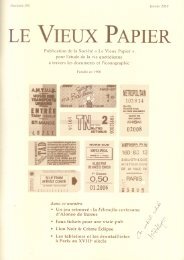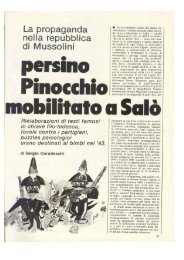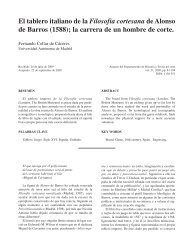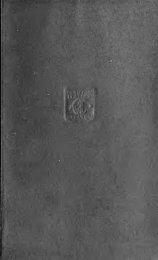Board games from the city of Vijayanagara (Hampi ... - Gioco dell'Oca.
Board games from the city of Vijayanagara (Hampi ... - Gioco dell'Oca.
Board games from the city of Vijayanagara (Hampi ... - Gioco dell'Oca.
You also want an ePaper? Increase the reach of your titles
YUMPU automatically turns print PDFs into web optimized ePapers that Google loves.
R.VASANTHA, BOARD G AMES FROM THE C ITY OF V IJAYANAGARA 35<br />
complete <strong>the</strong> looped course and return home wins. Players might have three or four<br />
pieces each. The action is controlled by throwing dice, requiring a certain throw to enter<br />
<strong>the</strong> game (for example 1, 5, or 6) and <strong>the</strong> same number to continue <strong>the</strong> turn. Hence<br />
throwing 2, 3 or 4 would end <strong>the</strong> turn. Landing on an opposing player’s piece captures<br />
<strong>the</strong> piece, unless <strong>the</strong> piece is on a cross-cut safe square. Usually, in this type <strong>of</strong> game, an<br />
exact throw is required to “get out” and <strong>the</strong>reby win <strong>the</strong> game.<br />
Enhanced rules such as blocking tactics and playing in patterned teams such as in<br />
Pachisi may also have been used.<br />
To conclude, according to <strong>the</strong> existing oral and play tradition, to contemporary<br />
(1300-1600) regional literature and to foreign traveler’s accounts, <strong>the</strong> board <strong>games</strong> <strong>from</strong><br />
<strong>the</strong> <strong>city</strong> <strong>of</strong> <strong>Vijayanagara</strong> and surroundings may be classified into five categories, such as:<br />
1. <strong>games</strong> played by <strong>the</strong> royalty,<br />
2. <strong>games</strong> played for <strong>the</strong> royalty,<br />
3. <strong>games</strong> played by masses (“folk <strong>games</strong>”),<br />
4. <strong>games</strong> played by ladies,<br />
5. <strong>games</strong> played by children,<br />
contrary to <strong>the</strong> classification made by H.J.R. Murray (Murray) between war <strong>games</strong>,<br />
hunt <strong>games</strong>, race <strong>games</strong>, <strong>games</strong> <strong>of</strong> alignment, etc.<br />
References<br />
Early sources (all dates AD)<br />
Anantha 1456. Anantha amatya. Boja rajiyamu by Anantha, 1456 (in Telugu), ed. &<br />
pub. by Telugu Akademi, Hyderabad, 1989.<br />
Bhima 1400. Basava Purana by Bhima, 1400 (in Kannada), ed. by Lingayata<br />
Vidyabhivruddhi Sams<strong>the</strong>, Dharawada, 1969.<br />
Goparaju 1398. Simhasana dvatrimshika by Koravi Goparaju, 1398 (in Telugu), ed. by<br />
Andhra Sahitya Parishattu, Rajamundry, 1960: Vol. 1 & 2.<br />
Krishnadavaraya c.1517. Amuktamalyada by King Krishandevaraya c.1517 (in Telugu),<br />
ed. & pub. by Telugu Akademi, Hyderabad, 1990.<br />
Kumara Vyasa 1400. Gadugina Bharata by Kumara Vyasa, 1400 (in Kannada), ed. by<br />
Mysoru Samstana Sahitya, Samskruti, 1958.<br />
Lakshmisha 1530. Jaimini Bharata by Lakshmisa, 1530 (in Kannada), ed. by Electric<br />
Press, Tumkur, 1941.<br />
Manchena 1400. Keyura bahu charitramu by Manchena, 1400 (in Telugu), ed. & pub.<br />
by Telugu Akademi, Hyderabad, 1992.<br />
Nanjunda 1500a. Kumara ramana sangatyagalu by Nanjunda Kavi, 1500 (in Kannada),<br />
ed. by G. Varadaraja Rao, Prasaranga, Mysore, 1966.<br />
Nanjunda 1500b. Ramanatha charite by Nanjunda Kavi, 1500 (in Kannada), ed. by H.<br />
Devirappa, Mysore, 1964.<br />
Ratnakaravarni 1560. Bharatesa Vaibhava by Ratnakaravarni, 1560 (in Kannada), ed.<br />
by T.S. Shamarao, Prasaranga, Mysore, 1966.<br />
Somana 1450. Uttara Harivamsamu by Nachana Somana, 1450 (in Telugu), ed. & pub.







